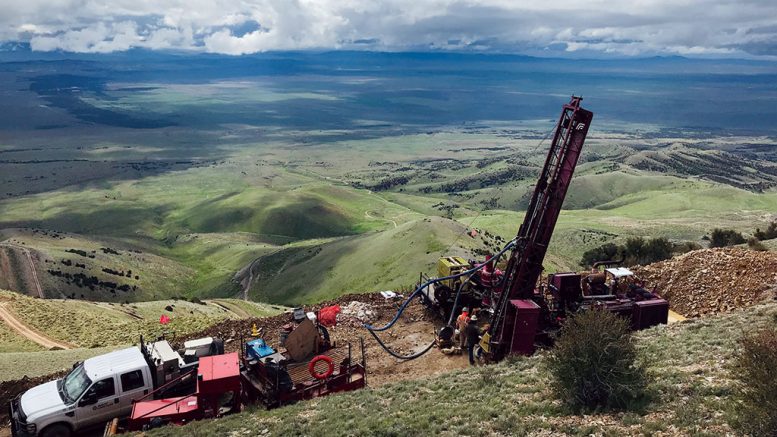
With an initial resource estimate for its past-producing Black Pine project in Idaho expected in the second quarter, Liberty Gold (TSX: LGD) has released assay results for the final 35 reverse circulation (RC) drill holes completed as part of last year’s 43-875-metre RC program at the site.
The release includes results from five targets, the D-1, D-2 and D-3 zones within Liberty’s “Discovery Focus Area” and assays from the M and Rangefront zones that are also within the Plan of Operations boundary.
Drill highlights from the Focus Area include 45.7 metres of 0.9 g/t gold starting at 234.7 metres; 44.2 metres of 1.14 g/t gold from 132.6 metres; 62.5 metres of 0.91 g/t gold starting at 179.8 metres; and 22.9 metres of 4.34 g/t gold from 181.4 metres.
The D-3 zone covers an area of approximately 500 metres by 300 metres and appears to be connected to the greater Focus Area through a halo of lower-grade mineralization. Step-out intercepts suggest an expansion of this area toward the F Zone, 700 metres to the south, and eastwards, underneath the D-1 Zone.
The Southeast Extension portion of D-1 also appears to grow down-dip and to the north of a historic pit with potential for a connection with the D-2 South area.
Drilling at the M Zone, 1,000 metres outside of the Discovery Focus Area returned 38.1 metres of 1.26 g/t gold starting at 89.9 metres; the Rangefront target, 1.5 km from the key area returned a 12.2-metre interval of 0.41 g/t gold starting at 62.5 metres.
The 1.5-km distance between Rangefront and the Discovery Focus Area has not been drilled. Liberty’s recent permit amendments now allow the company to access these grounds, which will be a focus of this year’s exploration. The amended Plan of Operations expands the drill permit area by 4.6 sq. km to 11.9 sq. km.
“We are happy to finalize all of the RC drilling from the 2020 program, which was highly successful by any measure,” Cal Everett, Liberty Gold president and CEO, said in a release.
“The 2020 program resulted in a significant new discovery at the D-3 zone, and virtually all of the regional targets returned mineralized intercepts. With the results in, we have begun work on a long-anticipated resource estimate, a major milestone on the road to advancing Black Pine as a development project.”
Three-dimensional modelling of the Black Pine system suggests that the D-1 and D-2 zones may be in the hangingwall of a fault system. Both of these areas are open down-dip with step-out drilling planned for 2021.
Assays are pending for five core holes completed last year. The 2021 drill program is scheduled to kick off in April.
Black Pine produced 435,000 gold oz. between 1992 and 1997 from five shallow open pits.
(This article first appeared in the Canadian Mining Journal)